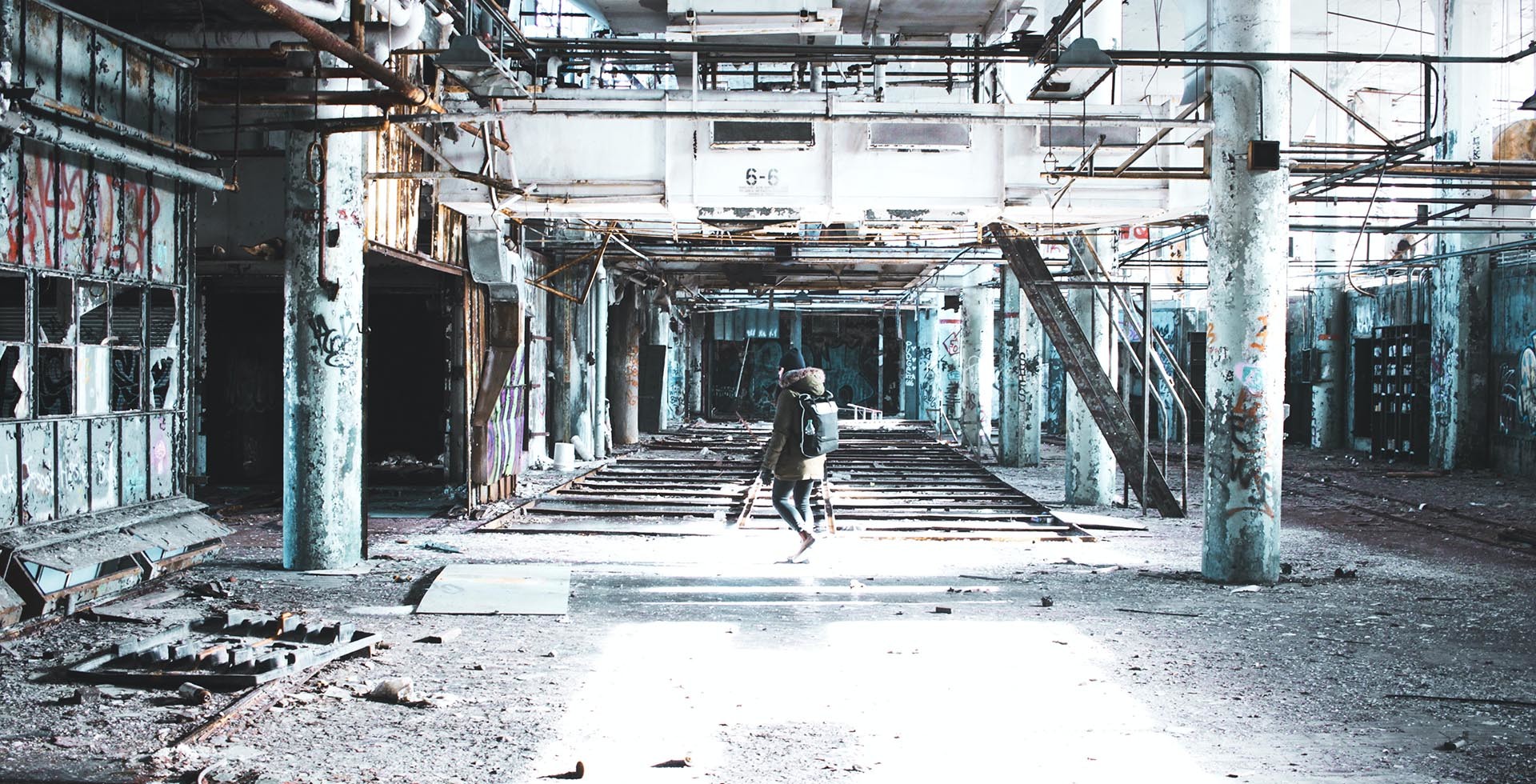Author | M. Martínez EuklidiadasOne century they are flourishing, the driving force behind the economy, and the next, they are a shadow of their former self. A little later the last houses resist the passage of time with their sunken roofs. The economy comes to a halt, firms leave in search of the wealthy upper class, and what is left behind is an impoverished population with insufficient skills to invest in the city. That is how cities die.
Signs to recognize and identify a dying city
Although there are no set rules to identify a dying city, there are factors that provide clues in this regard. The analysis of the per capita income drop, the lack of social infrastructures, the fall in house prices, the rusting industrial belt or the continuous migration of the wealthy population, are signs of a dying city.
Per capita income drop compared with other cities
One of the most interesting factors for analysis, is the drop in per capita income or income per inhabitant. This often occurs when various circumstances coincide, such as the inability of cities to attract business investments and the exodus of higher incomes. Therefore, the gradual exodus of the upper classes reduces the mean, median and mode of the remaining population.
Rapid drop in house prices
If large part of the population leaves or if the real estate grows too much, there is a drastic drop in house prices, forcing developers to cut prices and making it impossible for citizens to sell their properties. This then leads to a downward spiral, as those who can afford to, abandon the city.
The slow emptying of cities
There are plenty of reasons for a city being left without inhabitants, particularly the two mentioned above. An increase in crime, lack of jobs or a search for better opportunities are others. We have seen all of these factors in practically all the rapidly industrializing cities of the 19th century, such as Manchester in the United Kingdom, or Detroit and Michigan in the United States.
Education, the basic element for a city to survive
Throughout the 19th century, many industrial cities experienced rapid growth, such as Manchester, which went from having less than 100,000 inhabitants in 1800, to 750,000 in 1931. Since then, the city has experienced a mass exodus, leaving it with fewer than 550,000 inhabitants. Its big mistake was not using the surplus to invest in the type of education that would end up displacing the industry.
Detroit, the rise of the industrial city
The city of Detroit is often used to illustrate the rise and fall of cities. With a population of just a few families in 1800, by 1900 it was a thriving metropolis with almost 300,000 inhabitants Its first decisive point came in 1960, with 1,670,144, however, by then, it was already fatally wounded.For decades, this industrial city was one of the greatest manufacturing centers of the United States, particularly during the westward expansion period -its privileged position next to the Great Lakes and the direct route from New York gave it an advantage- and during the world wars.The investment in heavy industry, the lack of competition from other parts of the world and an unrivalled canal infrastructure -the Erie Canal, inaugurated in 1825, was 380 miles long, running from Lake Erie to New York, and transported all types of raw materials- attracted companies such as General Motors, Ford and Chrysler, which allowed it to grow and become a global leader.
The Third Industrial Revolution: Goodbye Detroit
Detroit, as with Manchester in the United Kingdom or Bilbao in Spain, is a direct child of the First Industrial Revolution (1760-1830) and they are precursors of the Second Industrial Revolution (1860-1917). They became powerful in metallurgy and in exchanging heavy materials, until global competition made them unable to compete. They were victims of the Third Industrial Revolution (1965-1990).Many of these cities, particularly Detroit, invested all of their resources in preserving their industry. Decade after decade, they spent vast sums of money in maintaining their current position, ignoring the economic change that would come. The result was a workforce made up of various generations of very skilled workers in specific tasks but without any quality formal education.By around 1920 in the United Kingdom and 1930 in the United States, the slowing down of the rate at which industrial cities were growing should have served as a sign to invest in schools, but things had been done in a specific way for too long. One last generation of young sixteen year-olds without formal training ventured out in search of the factories, only to discover that these were closing one after another.
Is it feasible to resuscitate a dying city?
On the other side of the Erie Canal, at the beginning of the 20th century, New York found itself in a similar predicament to Detroit. New York relied on its industrial activity and the associated maritime transport, but it was able to get ahead of the decline. Over a period of various decades, it invested vast amounts of resources in schools and universities, prioritizing a new form of professional development for youngsters.The result is well-known: New York became the leader of the Third Industrial Revolution together with Silicon Valley on the opposite coast.. And other cities, such as Bilbao or London on the other side of the ocean, were able to reinvest the resources obtained with industry into smoke-free cities. These two cities swapped industry for services. Could the ‘Detroits’ imitate them?In 2013, the report ‘Regenerating America’s legacy cities’ explored the challenges facing “shrinking cities”, making it clear that the population loss was not a cause but rather a consequence (which is why it is not at the top of the list above). The secret seems to lie in attracting talent.What has been discovered is that in many of these regressing cities, a small and central urban nucleus is emerging with force. It seems that it only takes a few tech companies to establish themselves in urban centers for the erosion process to slow down slightly and for a virtuous circle to begin that prevents the deterioration.Clearly this is not easy. The companies want to establish themselves where there is talent in which to invest, and many cities lack appropriately sized schools or universities and an extensive network of companies, therefore it is a risk to be avoided and a negative spiral.
Investing in long-term education, the key to everything
It is therefore clear that city councils must invest in long-term education. Just as the Silicon Valley firms at the end of the 19th century relied on Stanford (1891), industrialized cities that do not invest in the education of future generations are set to carry on shrinking.The long-term aspect is the most complicated part. Mass investment in Detroit and similar cities will reap the benefits within two or three decades, which means the generation that actually invests, will not benefit from the capital expenditure. This, and only this, is the main problem facing declining cities: no generation wants to be the one to put up the initial capital of the next revolution.Images | Patrick Tomasso, Erie Canal map, Viktor Talashuk, Owen Lystrup






















































